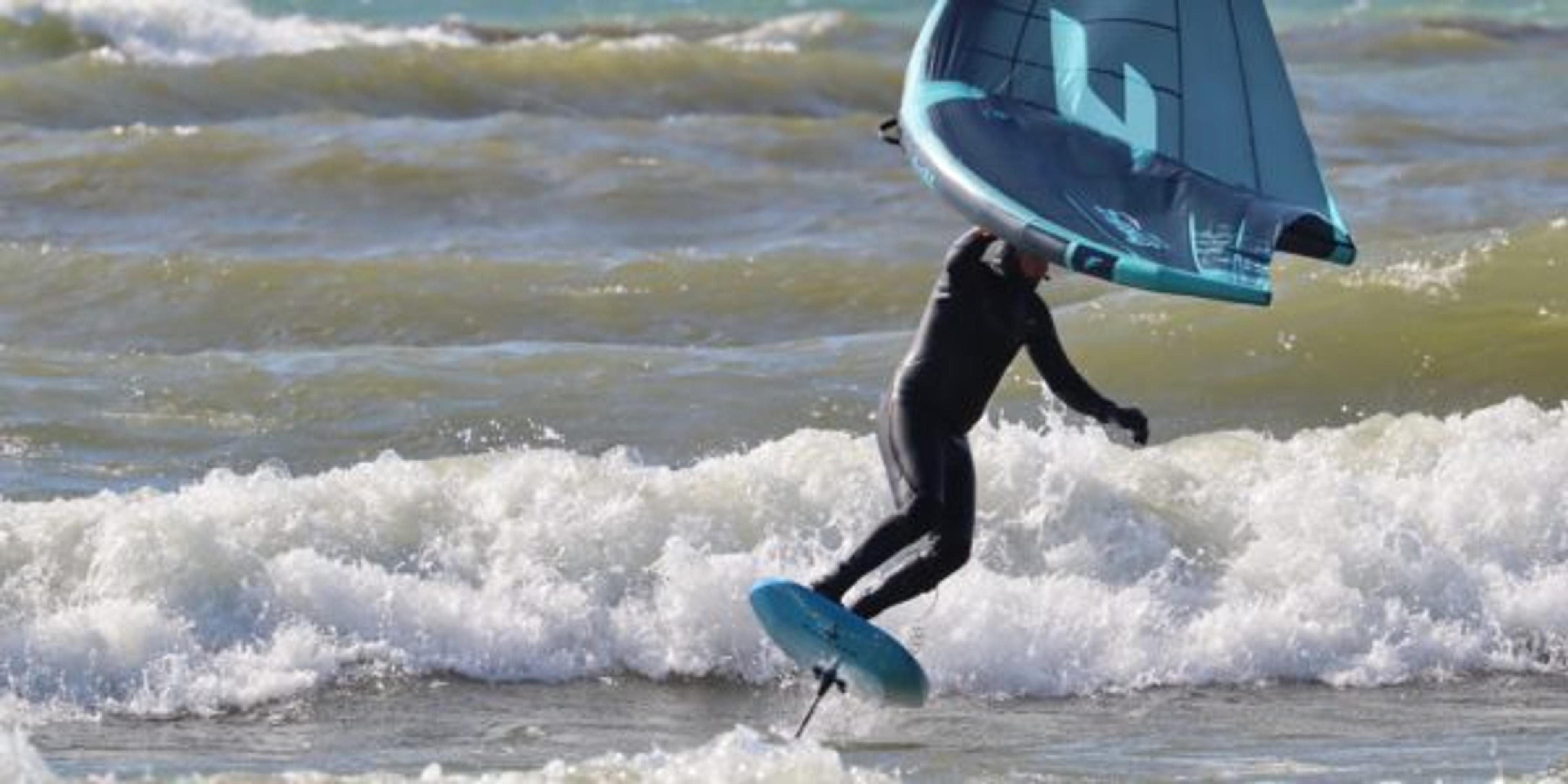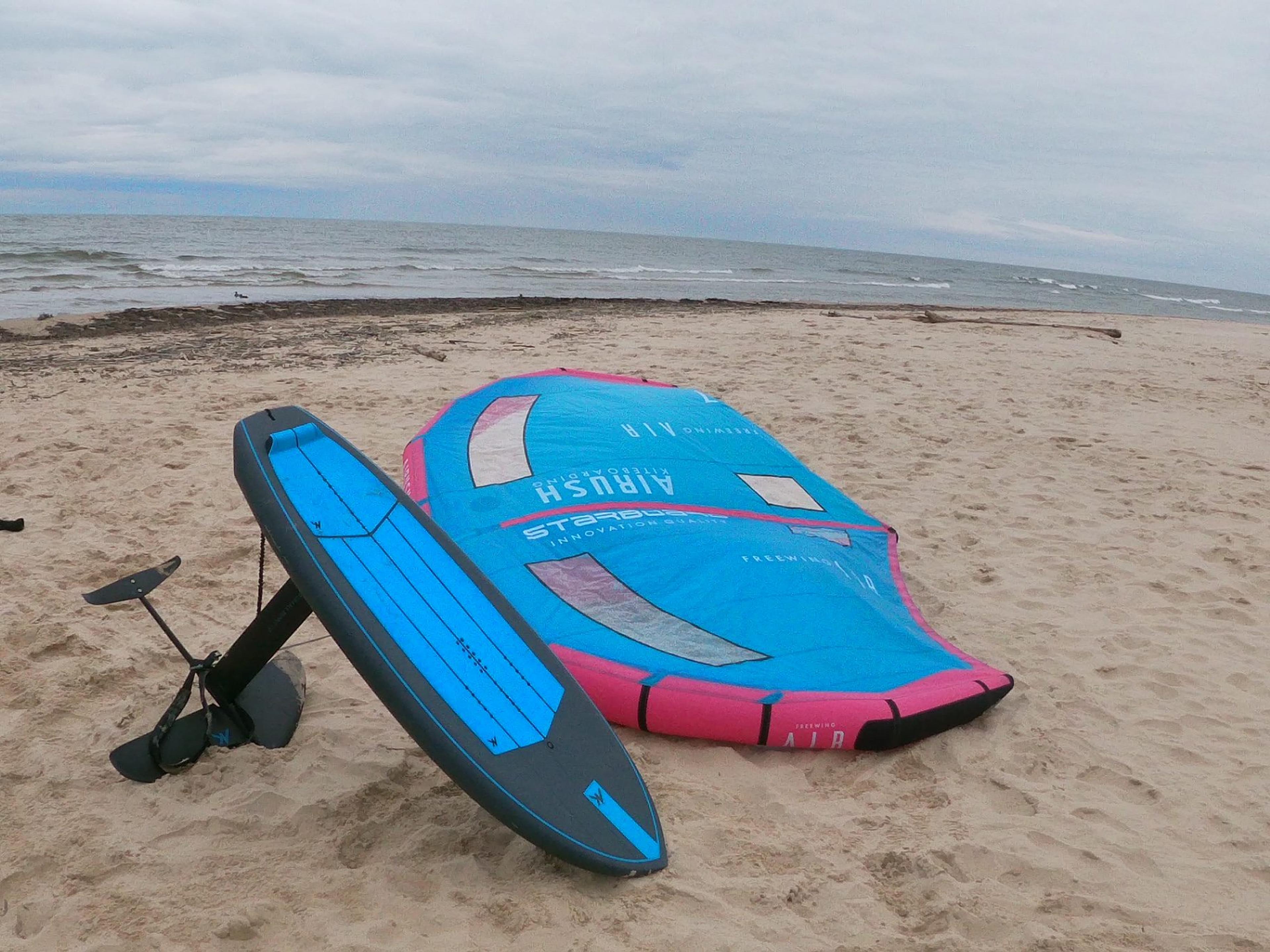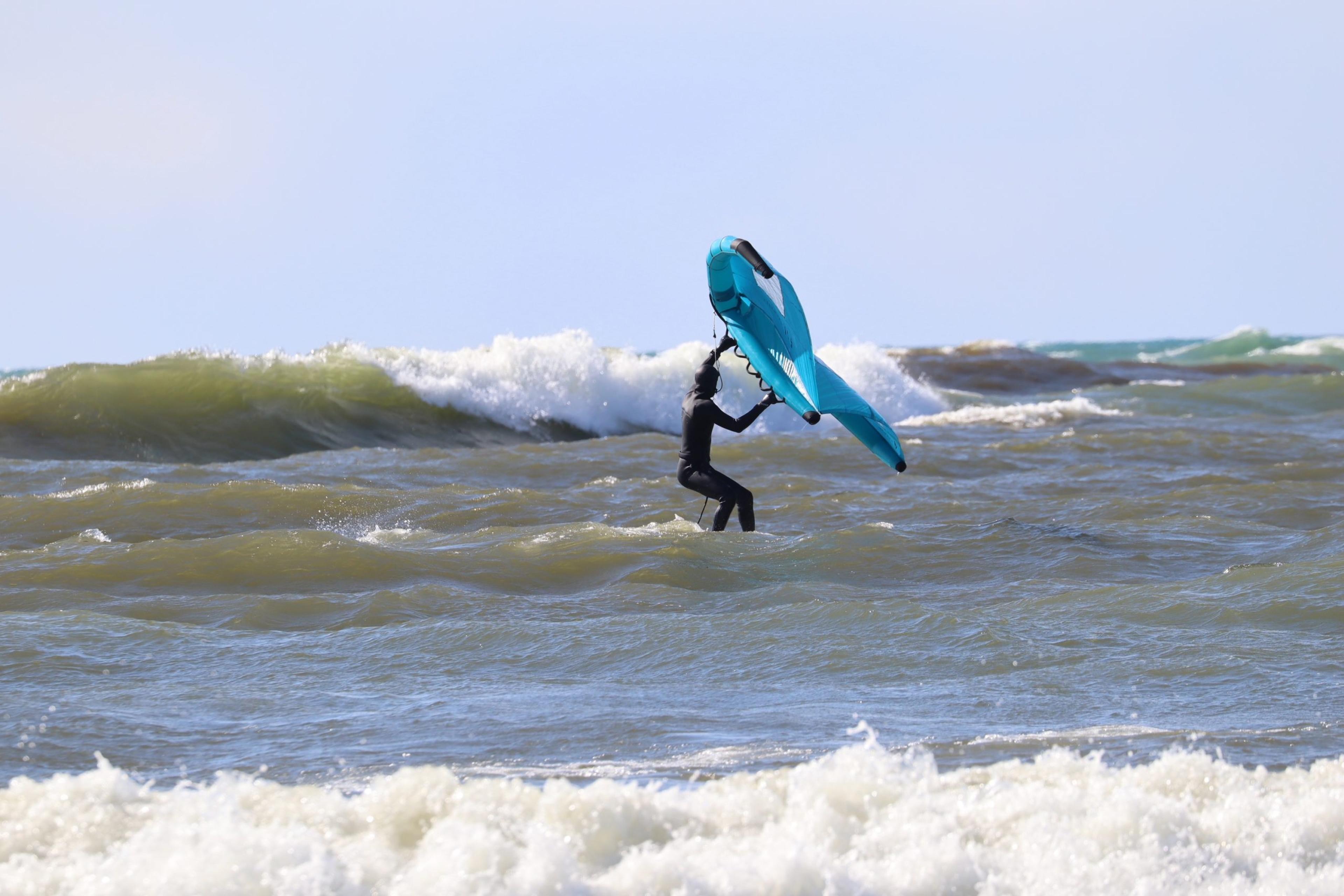Wing Foiling is Taking off on Lake Michigan
Jake Newby
| 5 min read

A relatively new water sport is making waves in Michigan.
It’s called wing foiling and it has seen a spike in popularity over the last three years. Wing foiling is a type of wing surfing activity that involves riding a hydrofoil board while harnessing the wind’s power by holding an inflatable wing with both hands.
A hydrofoil is a long, fin-like object that extends from the bottom of a surfboard-style board. The hydrofoil props the board up a few inches above the water’s surface, giving the rider more control of their movements and more conservation of their energy as opposed to surfing on a standard surfboard, which generates a lot of friction and drag because it is ridden directly on the water.
One of the major appeals of wing foiling is it can be fun to do even if the waves aren’t high and the wind isn’t overbearing, because of its versatility. The board and wing do some of the work for you.

Saint Joseph, Michigan resident and water sport instructor Tyler Spence said wing foiling can become addicting once you get the hang of it.
“It’s a great way to get on the water, and it’s great exercise,” Spence said in an interview with Blue Cross Blue Shield of Michigan (BCBSM). “You feel like, once you can start going up winds, you feel a sense of accomplishment. The whole learning process is a lot of fun, because you’re on the water, you’re feeling the energy of the wind, and then as soon as you can get up on the foil it’s a huge adrenaline rush.”
Wing Foiling Beginner Tips
Wing Foiling is not a particularly difficult water sport to pick up.
It’s often compared to kiteboarding or kite foiling, but Spence believes wing foiling is easier to learn and safer than those kite-based water sports, because a wing is typically smaller in size and less awkward to handle than a kite. Wings also are not equipped with the kind of kite lines that can get wrapped around trees or other objects.
“It would be helpful to have a lesson, but you don’t need it,” he said. “I would say it’s like doing snorkeling compared to scuba diving. You don’t need the full three-day course to learn how to do it independently. You can just get a few pointers from an instructor. It would be helpful to know how to foil first, but even that’s not a prerequisite.”
Spence said the following three factors are important for novices to know:
Getting the right gear: If you’re not on a very windy lake, you might need a bigger board. “When the wind is lighter, you want a larger board,” Spence said. “So, my recommendation is, in the spring in the fall in Michigan, get a smaller wing. But then in the summer you might need a bigger wing.”
Getting the right foil size: “You want a large front wing on your foil if you’re wind winging, you don’t just want to be like, ‘Oh I found this cheap foil board, it’ll work,’” Spence explained. “You don’t want to use a kite foil or surfing foil. You want something that’s compatible with your size and weight.”
Knowing water depth: “You want to make sure the lake you’re choosing isn’t too shallow, some lakes are really shallow, or they have a lot of weeds in the summer, so they may not be possible certain times of year,” he said.
He added that you should avoid wing foiling when wind gusts approach 50 miles per hour.

Where are the Best Places to Wing Foil in Michigan?
Spence said the most optimal time of year to wing foil in Michigan is the fall, because the water is still warm, and the wind is strong. But he said the summer is great, too.
Three locations along the shoreline of Lake Michigan stand out above other spots for wing foiling during the summer months, according to Spence:
- Pere Marquette Park Beach in Muskegon
- Little Sable Point
- Point Betsie
“Those are probably the best because they get a thermal,” Spence said. “When you get a thermal wind, there’s a lot of good wind down low. Other times when it’s really windy, sometimes the wind is up high which would be fine for a kite, which is taller, but it’s not great for a wing.”
Why Wing Foiling is Growing in Popularity
Spence said wing foiling in Michigan started to take off on the country’s coasts early in the COVID-19 pandemic. It then trickled inward in the past two years.
“There are more and more people that are getting it and making it look fun, so it’s starting to catch on,” Spence said. “If you go to your inland lakes, like Gull Lake, Gun Lake or Pine Lake, something like that, and 10 people see you wing foiling one day, maybe 5 of them buy some equipment and try it.”
Wing foiling is a personal favorite for Spence, who owns the company Stoke Riders, where he serves as a professional wing surfing and kiteboarding instructor. He predicts wing foiling will ascend to an even higher level of popularity by 2023.
“It’s trending to the point that there will probably be more people wing foiling than kiteboarding either this year or next,” he said. “The more you do it, it just gets exponentially more fun. As soon as you can start riding waves, you can start doing your jibes or your tacks. You can do tricks, you can do jumps. It’s one of those sports that doesn’t get old, it just gets more fun the more that you do it.”
Photo credit: Tyler Spence/Stoke Riders
More community-based stories:





